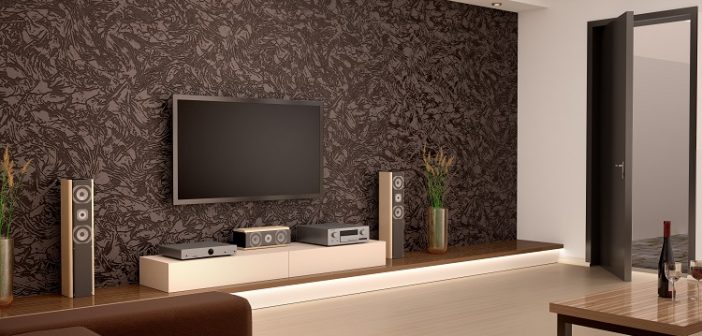A weak TV signal makes it hard to watch shows. Frozen pictures, missing channels, and distorted sound are very frustrating. Before getting a new antenna, try making some easy changes to improve the signal. Many problems come from how the aerial is positioned, interference, and low-quality parts. These issues can often be fixed without having to replace the whole aerial.
Check Where Your Aerial Is Positioned
An antenna needs to be placed in the right spot to get a strong signal. Small changes have a bigger impact on how things are received than many people think. Pointing the antenna towards the closest emitter makes the signal stronger.
Moving it a little can make a big change. Raising it higher stops walls, trees, and buildings from blocking it. If you set it up indoors, putting it near a window usually improves coverage. A small change in angle can significantly affect how many channels you receive and how clear the signal is.
A skilled TV aerial installer uses signal meters to get the best placement. If there are still receiving problems, an expert will help find the best spot for a stronger signal. Installing an adjustable aerial bracket lets you change the angle for better setting and improved results.
Check Your Cables and Connections
Bad or poor-quality wires reduce TV signals. A broken coaxial wire causes interference, resulting in a bad picture.
Make sure to check for any frayed, loose, or rusted links to keep the connection stable. Using better shielded wires instead of old ones cuts down on signal loss. Shielded wires help block interference from appliances in your home.
A skilled TV aerial service checks and fixes broken wires to ensure everything works well. Keeping wires secure and straight helps prevent damage in the long run. Using clips or cable trays to hold wires along walls helps protect them from damage over time.
Minimise Signal Interference
Household electronics can disrupt TV signals. Wi-Fi routers, radios, cordless phones, and even LED lights can sometimes interfere with signals. Power lines and big metal items can cause unexpected disruptions.
Keeping the aerial away from electronic gadgets reduces interference. Turn off close appliances while watching TV to avoid distractions. If there is still interference, moving the antenna or adding a signal filter can improve the coverage.
A skilled aerial installer finds sources of interference and changes the positioning to reduce signal problems. A signal filter can help better reception quality if needed. Filters stop unwanted signals that can cause pixelation or make channels disappear.
Use a Signal Booster
Weak signals can be improved with a generator, but adding too much power can distort them. If the signal is weak, a masthead booster makes it stronger before it gets to the TV.
Picking the right booster helps avoid overloading. A skilled TV aerial service checks signal strength and suggests the best option. Only use a booster when needed, as too much can make the picture less clear.
If the signal is weak in several rooms, a distribution booster makes sure each TV gets a strong signal. Proper placement stops unwanted noise. High-gain amps perform better when used with properly placed antennas.
Look for Local Gearbox Problems
Sometimes, the issue isn’t in the house. Issues with the transmitter and repair work lead to short interruptions. Checking area service updates shows if any gearbox problems are impacting reception. Some areas have scheduled work that may disrupt broadcasting for a short time.
Bad weather, like heavy rain and strong winds, can make transmissions weaker for a short time. Thick fog and electrical storms can also cause problems with coverage. Temporary problems usually fix themselves without needing any changes to the tools.
A professional TV aerial installer checks if neighbourhood problems are to blame. If the issue continues, they recommend other ways to get a stable link. You may need to adjust or change the position of aerials to deal with signal changes in the area.
Use Good Splitters for Multiple TVs
Using one antenna for several TVs may reduce the signal strength. Cheap or low-quality splitters can lead to signal loss, which makes the picture clarity worse. Regular splitters can make TV signals weaker for extra TVs.
Using a good splitter or powered booster stops the signal from getting weaker. Making sure each TV gets a good signal helps prevent reception problems in different places. Well-installed splitters make sure that all linked devices get a strong signal.
A professional TV aerial service ensures proper distribution, stopping weak signals & interference across multiple TVs. If more than two TVs share a signal, an amplified splitter prevents major signal drop.
Get Rid of Extra Extensions You Don’t Need
Long wire extensions weaken the signal. The longer the wire is, the weaker the signal will be before it gets to the TV. Every extra metre of coaxial line weakens the signal a little bit.
Using the shortest cable gives better coverage. Avoiding extra links and joints stops signal problems. Extra adapters and connectors can reduce signal strength, causing weaker receiving over time.
A professional installer measures and cuts wires to the right length, making sure the signal works well without any losses. If you have to use extensions, using good quality cables that don’t lose much data will help avoid big problems.
Protect Your Aerial Setup from the Weather
Weather affects TV transmissions. Heavy rain, wind, and snow can affect your coverage, especially if there are small damages to the cables or aerials. Bad weatherproofing speeds up damage and causes signal problems.
Making sure outdoor antennas are tightly secured stops them from moving in strong winds. Waterproofing cable links prevents moisture from causing problems. Using wires that resist UV light helps protect them from damage caused by long periods in the sun.
A professional aerial installer looks for weather damage and puts on protection covers when necessary. Keeping a stable setting helps lessen the effects of severe weather. Yearly checks make sure aerials stay in good shape, helping to avoid future problems.
Adjust Your TV Settings
Channels change frequencies over time. Retuning helps the TV find the newest stations. Freeview and other digital services occasionally change their bands, so you need to retune your device manually.
Doing a complete channel check will refresh the list of channels the TV can receive. If some stations are still missing, a professional TV aerial service can adjust the settings for better performance. Using the auto-tune feature helps you find new stations.
Retuning also fixes problems from old settings. If a TV hasn’t been updated in a while, some channels might not show properly. Resetting the TV’s tuning settings to the original defaults can help regain missing channels.
Conclusion
A weak TV signal doesn’t automatically mean you need to get a new dish. Small changes help get better coverage, leading to clearer pictures and more dependable service. Improving how things are set up, reducing interference, and using better cables can boost signal strength without needing a complete update.
A skilled aerial installer makes sure everything is set up correctly. Instead of dealing with bad reception, get professional help for smooth watching. Simple changes, like moving the aerial, updating the wires, and checking for interference, can greatly improve TV signal quality.




